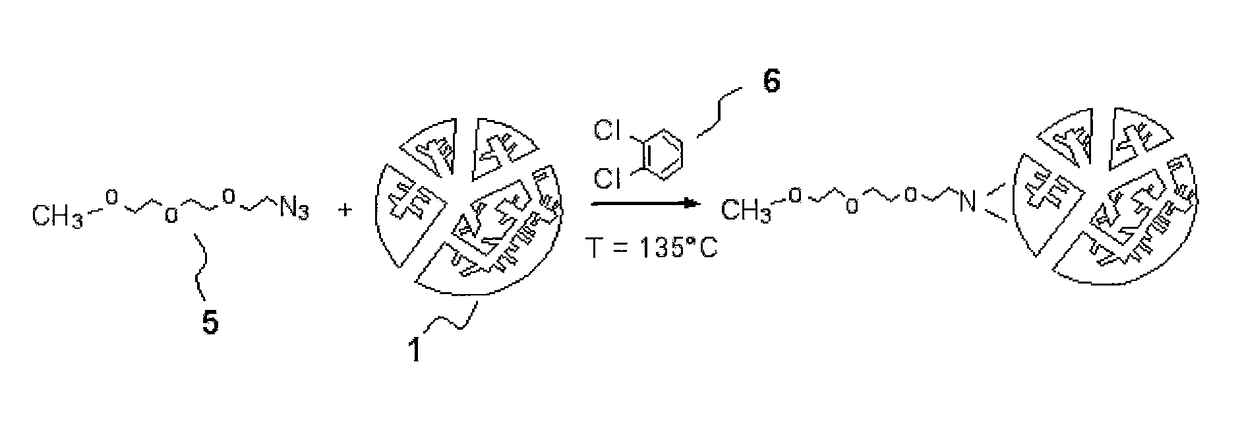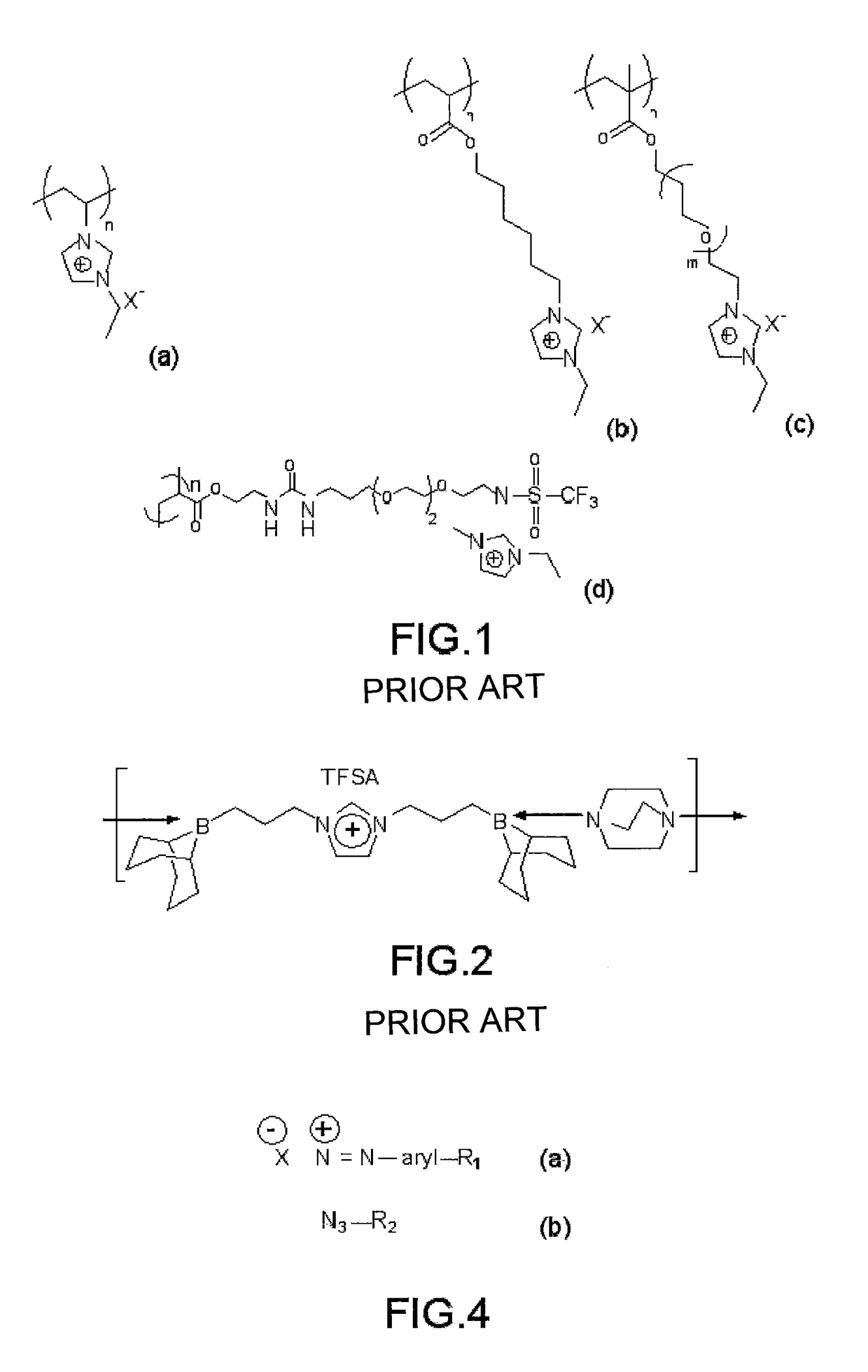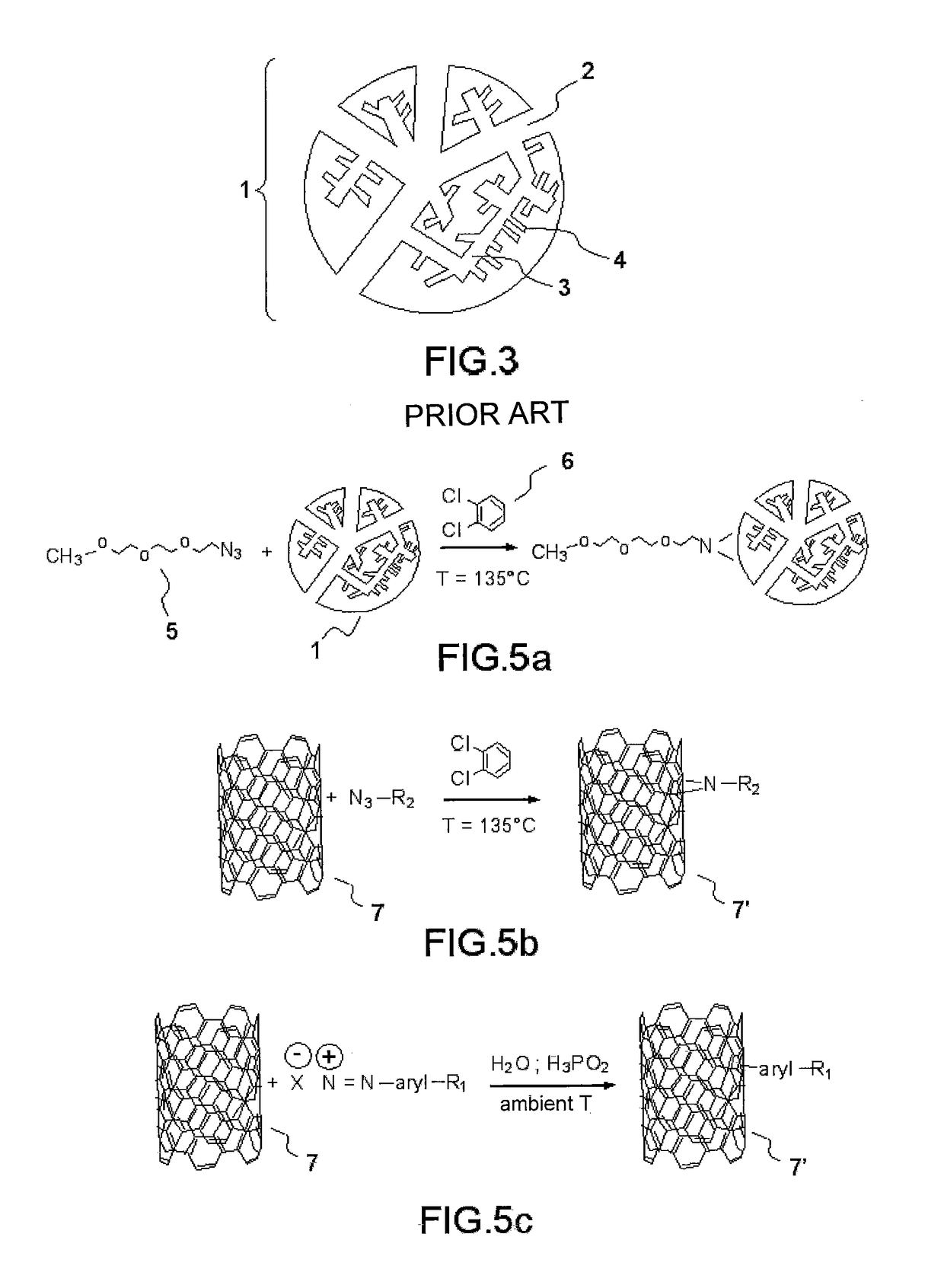Electrode-gel electrolyte assembly comprising a porous carbon material and obtained by radical polymerisation
a porous carbon and radical polymerisation technology, applied in the direction of hybrid capacitor electrodes, hybrid capacitor electrolytes, etc., can solve the problems of significant inability to achieve the desired power performance, and inability to achieve the desired ionic conductivity. , to achieve the effect of reducing the risk of solvent leakage, the ionic conductivity obtained is not very stabl
- Summary
- Abstract
- Description
- Claims
- Application Information
AI Technical Summary
Benefits of technology
Problems solved by technology
Method used
Image
Examples
Embodiment Construction
[0082]So as to enable the crosslinking of the macromolecules via a radical route in the presence of a carbonaceous material, the free radical-trapping sites are functionalized. The free-radical trapping sites are combined with molecules of low molar masses comprising diazonium salts, as represented in FIG. 4a, or azide groups, as represented in FIG. 4b. The sites then become unavailable for trapping free radicals released during the initiation of the crosslinking reaction of the monofunctional and polyfunctional monomers via a radical route.
[0083]FIG. 5a represents the reaction for forming a chemical bond between the carbonaceous material and the functionalizing molecules, i.e. reaction for functionalizing the carbonaceous material by molecules of low molar mass. In this particular case, it is the combination of an azide 5 with a material comprising activated carbon 1.
[0084]In the example chosen, the azide is 1-azido-[2′-(2″-methoxyethoxy)ethyl]-ethane 5. The functionalizing reactio...
PUM
 Login to View More
Login to View More Abstract
Description
Claims
Application Information
 Login to View More
Login to View More - R&D Engineer
- R&D Manager
- IP Professional
- Industry Leading Data Capabilities
- Powerful AI technology
- Patent DNA Extraction
Browse by: Latest US Patents, China's latest patents, Technical Efficacy Thesaurus, Application Domain, Technology Topic, Popular Technical Reports.
© 2024 PatSnap. All rights reserved.Legal|Privacy policy|Modern Slavery Act Transparency Statement|Sitemap|About US| Contact US: help@patsnap.com










